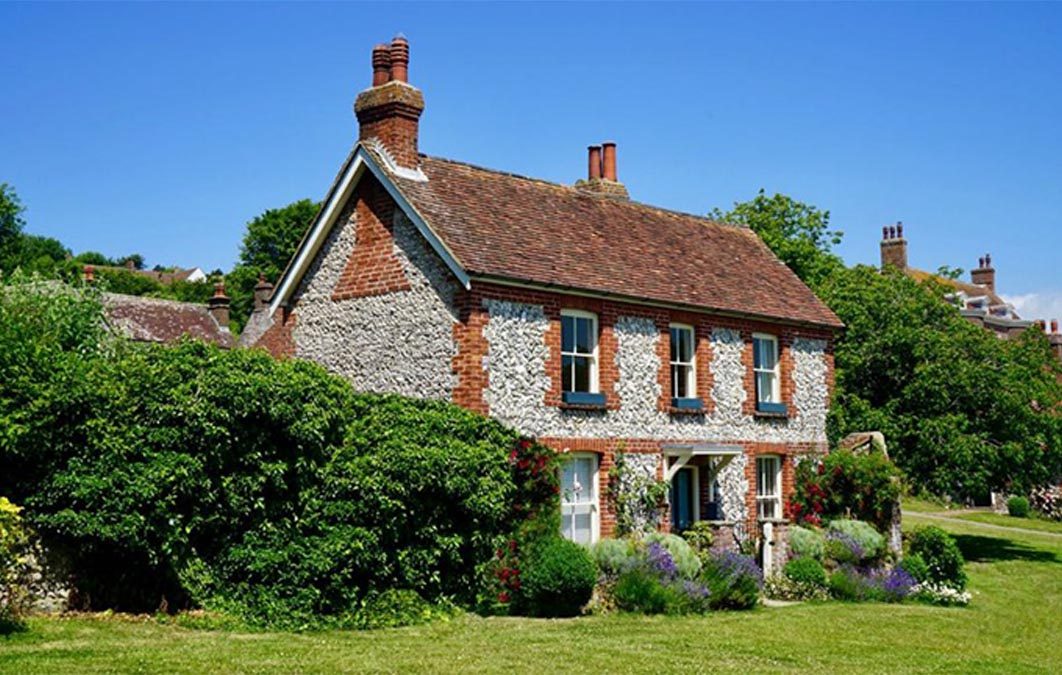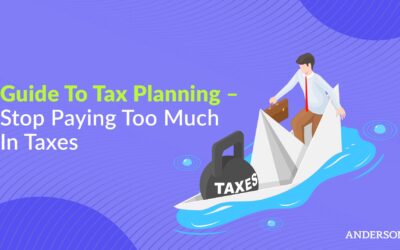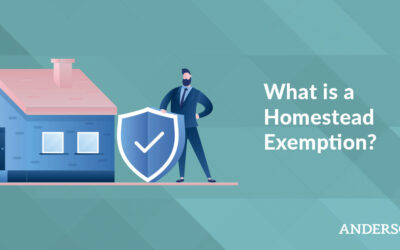Updated October 9, 2021
House flipping is the business of purchasing a property and then renovating it to sell for a profit. It can be a profitable way to earn active income, and the real estate market is currently a hot topic for investors. While real estate markets fluctuate, solid investments tend to climb in the long term. If you’re interested in earning money by flipping houses, follow these important tips.
How to Flip Houses [Flipping Houses for Big Profits]
- Calculate Your Total Acquisition Costs
- Stick to the 70 Percent Rule
- Secure Your House Flipping Financing
- Team Up with a Professional House Flipping Real Estate Agent (or Become One)
- Ask the Right Questions and Do Your Own Research
- Plan Carefully but Be Prepared to Go Over Budget
- Give Yourself Enough Time to Flip the House and Profit
House flippers generally look for properties that other buyers are uninterested in purchasing. They are interested in cheap houses for sale, even if they are distressed, though some house flippers prefer purchasing more finished properties. House flippers buy properties and bring them up to the standards of typical home buyers. In the United States alone, over 200,000 homes were flipped in 2017.
Flipping houses is distinct from other types of property investments. House flippers purchase properties with the goal of quickly reselling them — making it a fast process of investment selling. House flippers perform repairs and upgrades to make a home more appealing to buyers. These repairs increase the value of the home and justify a higher price.
House flipping is growing in popularity, with more people becoming interested in the challenge. Despite this increase in competition, however, flipping houses can be profitable when done correctly.
1. Calculate Your Total Acquisition Costs
The goal of flipping a house is to sell the home for more than it cost to purchase and renovate it. You do not want to pay too much for a property in need of renovation. It’s important to be realistic about your own renovation skills and your finances.
Most house flippers look for cheap homes for sale. There are several factors to keep in mind when considering how much to pay for a property. Consider how much you expect to make from selling the refurbished house. Calculate the purchase price and repair costs, back taxes, closing, and holding costs. This includes the cost of any real estate agent you hire.
2. Stick to the 70 Percent Rule
Successful house flippers stick to the 70 percent rule. This formula for success may be a little confusing for first-time flippers. The 70 percent rule means that you pay 70 percent of the ARV, or after repair value, when buying a property — subtracting the cost of repairs. For example, if you know that you could sell a home for $250,000 after fixing it up, but the cost of repairs will be $50,000, the 70 percent rule means you should not pay more than $125,000 for the house. We can arrive at this number because 70 percent of $250,000 (selling price) is $175,000. Once you deduct the repair costs of $50,000, the result is $125,000.
With this equation, you will be able to figure out how much money you need to buy a house and how this differs from what you need for ready-to-move-in homes. Novice flippers might have an easier time with this if they buy a property that needs minimal repairs but is not move-in ready.
3. Secure Your House Flipping Financing
There are several ways to finance flipping a house and taking out a loan is only one of them. It may even be possible to start flipping houses with no money. There are multiple different kinds of long-term and short-term loans you might be able to take out, each with their own pros and cons. You may be able to take money out either through private lenders or a loan business. Some of the loans you can take out to flip a house include:
- Hard money lenders
- Home equity line of credit
- Investment property line of credit
- Cash out refinance loan
- Bridge loan
- Permanent bank loan
- Create a land trust
If your cash flow is tied up in other investments, it’s very helpful to have a high credit rating when flipping houses. Sometimes, you will be presented with an opportunity to buy a property to flip but are short on the required cash. This is where a good credit score can become more important in today’s market.
Surprisingly, it is actually possible to flip houses with bad credit. There are several ways to do so, including partnering with another flipper, using public or private money lenders, or wholesaling. Real estate investors and lenders are looking for investment projects that will provide short-term capital gain, and this is good news for flippers. This often means that you do not spend a cent of your own hard money when flipping.
4. Team Up with a Professional House Flipping Real Estate Agent (or Become One)
Before you jump into the flipping business, you will need to have a plan. Will you be targeting single-family homes, or would you rather invest in multifamily housing? Who will be doing the repairs and renovation? Where are the most profitable neighborhoods?
Successful flippers have extensive knowledge of the local housing market. It’s important to network and connect with real estate agents who can offer valuable insights. Teaming up with a reliable realtor may help you during the process of flipping. A realtor has a huge amount of experience in the local housing market. He or she will be able to help you choose a property and then, of course, sell it for a profit. Realtors also offer insights about how to renovate, and even how to find off-market deals. In fact, a good realtor may be the best way to learn how to make money flipping houses.
You might want to consider acquiring a real estate license, but this is only recommended if you flip a lot of homes and enjoy the process. There are certainly some benefits to having a real estate license. These include having more access to network contacts and, of course, earning more income. However, obtaining a license can be a long and complex process. It is up to you to gauge whether the process is worth it for your business.
5. Ask the Right Questions and Do Your Own Research
Ask a lot of questions when you look at properties that catch your eye. Whether you are talking to an owner or a realtor, find out everything you can about the property. What repairs need to be done? When were the shingles last replaced? Has there ever been a fire, flood, or another event that could have seriously damaged the property? Is there asbestos or something else that could complicate or add cost to renovation? Look up county or city records, too, and verify there are no outstanding property taxes due. Make sure you are aware of all the real estate taxes that apply to the property you’re trying to flip. These include state taxes as well as city and county taxes.
Find out everything you can about the property’s location and community. How far is it from a downtown or business district? What amenities are nearby? Is it within a floodplain or other natural disaster area? How many schools are nearby, and which district is it in? Are there many employers within reasonable driving distance? Are more people moving into or out of the area? These kinds of questions can tell you more about a property than you would otherwise learn.
Ask your real estate agent about old houses for sale, especially cheap old houses, run-down houses, and small houses for sale. These properties may be your best answer to how to start flipping houses.
Many real estate investors use a class ranking to refer to different neighborhoods. These classes range from A to D. Class A neighborhoods are the wealthiest markets and are full of high-income families. Class B markets are middle-class neighborhoods. Class C neighborhoods have some middle-class residents along with blue-collar workers. Class D neighborhoods are those populated by lower-income brackets.
Each neighborhood class has advantages and disadvantages. Class A neighborhoods can yield the most profit but involve much more financing. They might also need a lot more investment to compete in their market. Class D neighborhoods, meanwhile, offer some of the most affordable properties for a lower profit. They are also easier to finance.
Some house flippers decide to specialize in a particular neighborhood class. For example, a much higher number of Class D property sales are from an investor selling to another investor. If you buy one of these properties, it is more likely that your buyer will be an aspiring landlord planning to rent. When the buyer is an investor looking for a rental property, usually this means less profit for the seller, although it generally leads to a smoother and faster sale.
For your first flip, you may want to target a Class B or C property. These properties often provide a good balance between initial cost, investment, repairs, and profit. They also open you up to a wide variety of potential buyers.
6. Plan Carefully but Be Prepared to Go Over Budget
When budgeting for a property purchase, you need to know how much money you have to spend. Remember that this is an investment. The better you plan, the better the outcome. However, it’s very rare for a project to go exactly as planned and you can expect to go over budget, no matter how careful you are when planning. You should expect obstacles to arise and some aspects of the renovation to cost more than you anticipated. Don’t forget to track all your expenses as well. Keeping track of all your mileage could help you write off some of the travel expenses at the end of the year when you claim the standard IRS mileage rate as an expense. It’s a good idea to prepare for the unknown by padding your budget with miscellaneous costs.
Keep a budget, a timeline, and a project scope. This does not have to be flashy or complicated, but it should be as exact and accurate as you can make it. Once you buy a property, keep track of how much you spend and what you spend it on. Make sure that you will have enough money to keep the project from stalling.
Your project scope is what you plan to renovate and improve. For your first home, you may want to stick to cosmetics. You can update the kitchen, bathroom, floors, and ceilings. The home may need new coats of paint inside and out. Avoid homes with structural damage. Structural problems are a quick way to destroy your investment. Real estate investing is often an uphill battle to make a property safe and durable. Avoid mechanical problems, as well. These kinds of issues may be costly and beyond the scope of your first flip.
Your ongoing expenses will come down to the cost of renovations, utilities, interest, realtor fees, and any state or county taxes you need to pay. It is vital to have a plan in place to ensure you are making money flipping houses — not losing it. The Trump Tax Reform created many different tax savings for real estate investors. Be sure to speak with a tax professional to see if any of these tax changes will impact your investment plans. You may even ask the tax professional, “is setting up a real estate LLC worth it?”
When planning your budget and estimating profit, be sure to account for the taxes you will pay. Flipping is defined by the IRS as active income, so you will be taxed just as you are with other income. Tax rates fall between 10 and 37 percent since profits from house flipping are treated as regular income. To learn more, you may want to review an IRS publication for flipping houses or talk with a professional tax advisor.
7. Give Yourself Enough Time to Flip the House and Profit
The time it takes to flip a house depends on several different factors. These include the experience of the flipper and the amount of renovation a house requires. Expert flippers with excellent connections can put a house back on the market within three months. For most people, however, it will take longer. Generally, house flippers look for the process to take as little as a few months. As motivated sellers, they have an interest in acquiring, fixing, and dropping the property as quickly as possible.
You can buy and flip a foreclosed home but expect lengthy delays. The bank must file extensive paperwork with the court to show the failure of the homeowner to make payments on their mortgage. This might take six to eight months. So, while it may be appealing to flip a foreclosed home, you will need to take the longer timetable into account.
Professional Services You Should Consider
If you are considering flipping houses, be aware that it should be a team effort. There are many professional services you should consider using. You will need to partner with top-quality realtors, money lenders, and contractors to make your business lucrative.
Your business will also benefit from the services of income tax experts, bookkeepers, professional contractors, and asset protection services. Contact the professionals at Anderson Advisors for assistance with your real estate investment efforts. Building a network of professionals is the key to success.
Tips for Successful House Flipping
Flipping houses can be stressful. There is so much to learn and do that it helps to remember to plan calmly, patiently, and thoroughly. It should also be noted that flipping houses is not a get-rich-quick scheme, but rather a process that takes time. Get input from others you know who are flipping houses or have done so before. Keep building a network of professionals who can help you reach your goals. Having a solid team of real estate agents, contractors, and tax professionals, such as Anderson Advisors, makes all the difference. Most importantly, make sure you go in with a solid plan. If you follow these tips, you will find that flipping houses can put you on the path toward financial independence. Contact Anderson Advisors today for assistance with your house flipping business.
Bonus Video
Free Strategy Session with an Anderson Advisor
Receive a detailed risk assessment to assist in lowering problem areas that could wipe out all of your assets with one wrong move. Speak with an Anderson Professional Advisor to get your FREE Strategy Session.
Limited-Time Offer: ($750 value.)
















